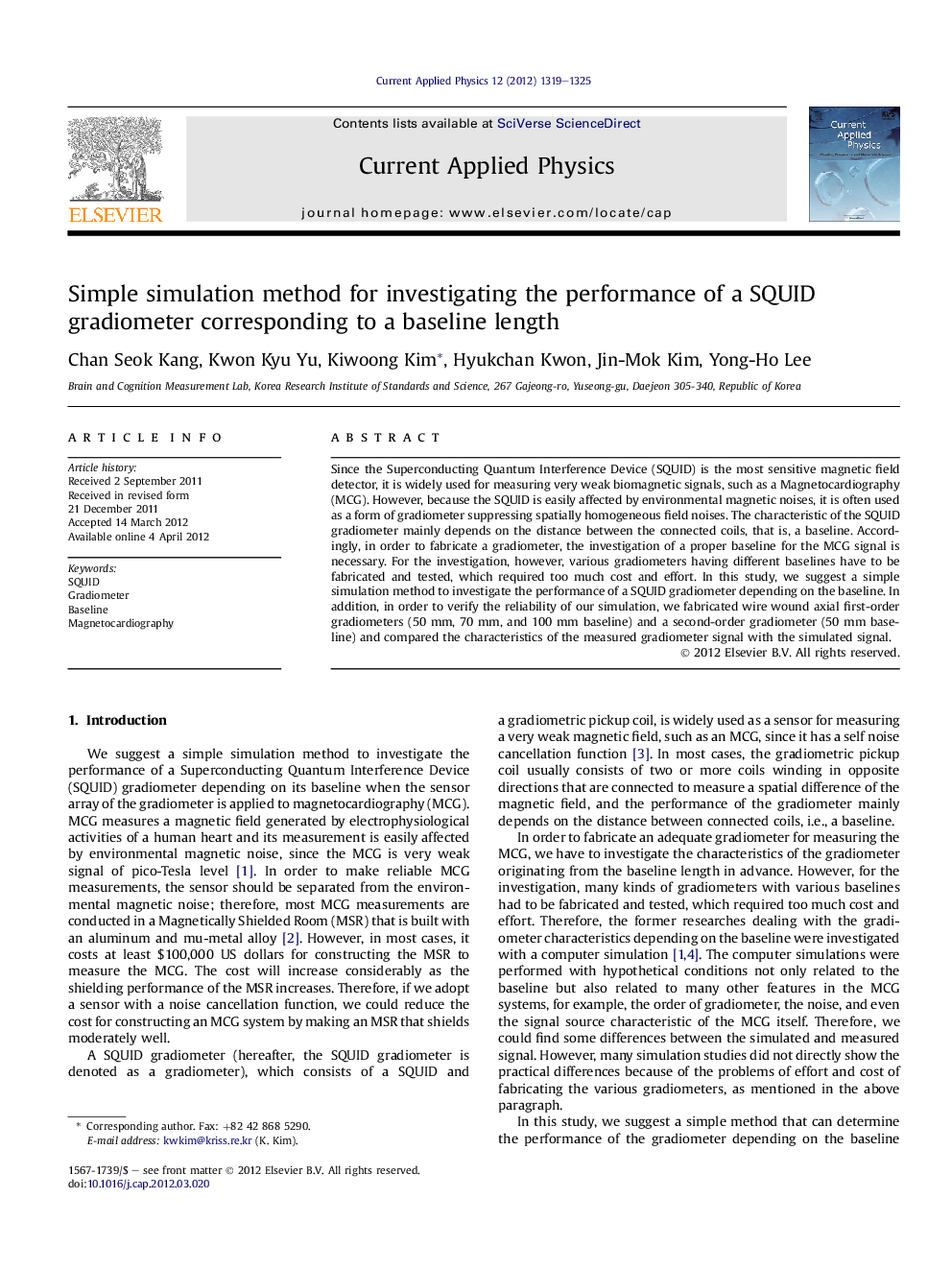| Article ID | Journal | Published Year | Pages | File Type |
|---|---|---|---|---|
| 1786741 | Current Applied Physics | 2012 | 7 Pages |
Since the Superconducting Quantum Interference Device (SQUID) is the most sensitive magnetic field detector, it is widely used for measuring very weak biomagnetic signals, such as a Magnetocardiography (MCG). However, because the SQUID is easily affected by environmental magnetic noises, it is often used as a form of gradiometer suppressing spatially homogeneous field noises. The characteristic of the SQUID gradiometer mainly depends on the distance between the connected coils, that is, a baseline. Accordingly, in order to fabricate a gradiometer, the investigation of a proper baseline for the MCG signal is necessary. For the investigation, however, various gradiometers having different baselines have to be fabricated and tested, which required too much cost and effort. In this study, we suggest a simple simulation method to investigate the performance of a SQUID gradiometer depending on the baseline. In addition, in order to verify the reliability of our simulation, we fabricated wire wound axial first-order gradiometers (50 mm, 70 mm, and 100 mm baseline) and a second-order gradiometer (50 mm baseline) and compared the characteristics of the measured gradiometer signal with the simulated signal.
► We suggest a simulation method to investigate the performance of a SQUID gradiometer. ► For the simulation, we measured MCG signals with 61-channel magnetometer system. ► We simulated the gradiometer signals of various baseline with the magnetometer signals. ► We fabricated gradiometers to check the reliability of our simulation method. ► The simulated signals shown the difference of around 6 % with the measured signals.
